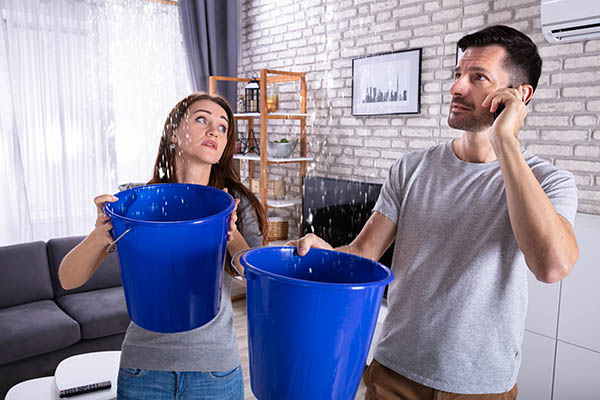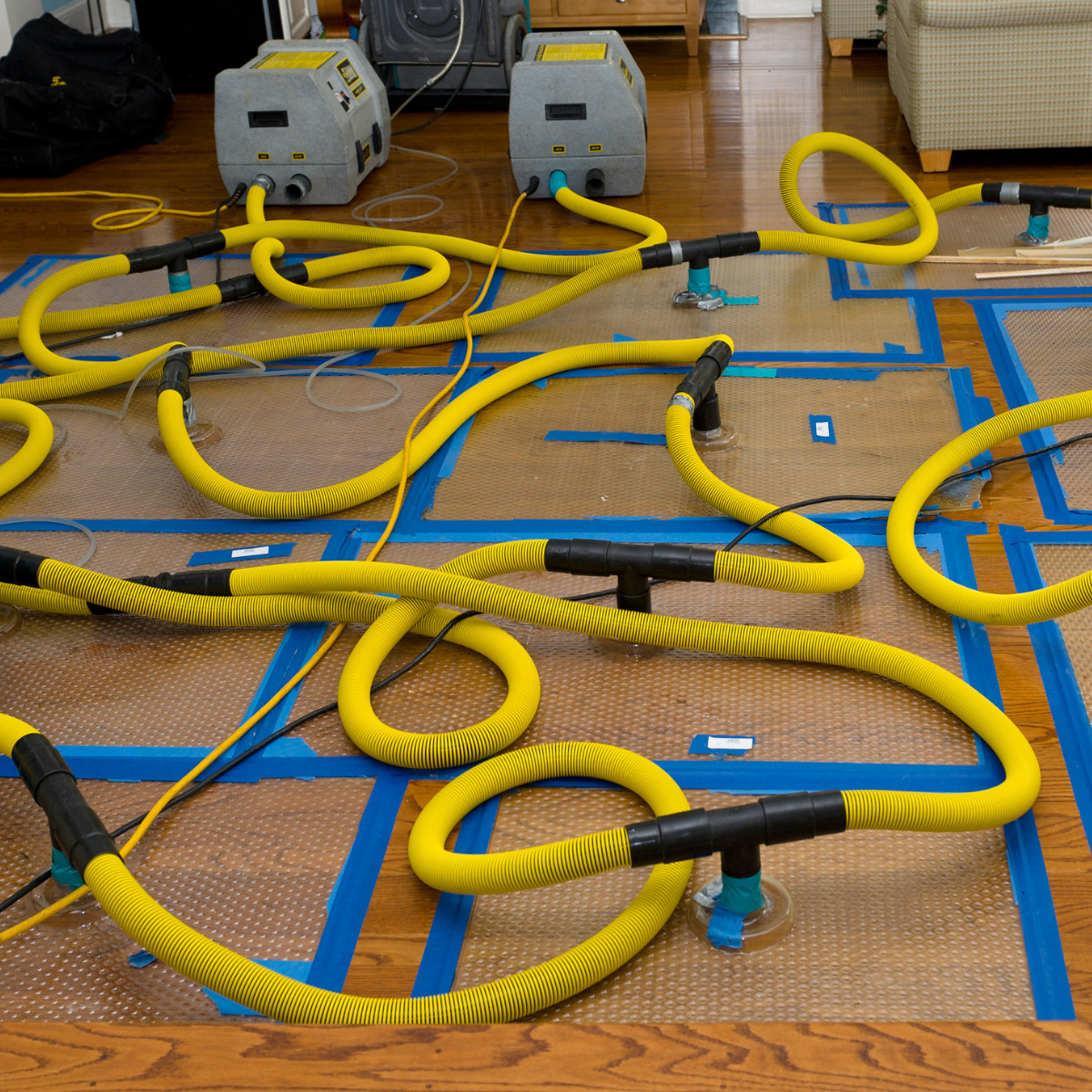How Flood Cleanup Services rebuild your property after severe water damage
Wiki Article
Water Damage Restoration 101: Understanding the Process and Cost
Water damage can strike unexpectedly, leaving house owners in a state of complication. Recognizing the remediation procedure is essential for efficient recuperation. From assessing the damage to choosing the best provider, each step affects the overall end result and price. Elements such as the kind of water damage and urgency also play a considerable role. What are the details methods utilized in restoration, and exactly how can one plan for potential costs?Kinds of Water Damage

Initial Evaluation and Examination

Water Extraction Techniques
Adhering to the preliminary assessment, reliable water removal strategies are used to mitigate damage and prevent additional issues. These methods involve using specific equipment such as submersible pumps and industrial-grade vacuums - Water Damage Restoration. The choice of technique depends upon the quantity of water existing and the kind of products impacted. For standing water, completely submersible pumps are generally used for quick elimination, while vacuums are ideal for drawing out water from carpets and furniture. In addition, advanced approaches like water removal floor coverings may be used for hard-to-reach locations - Water Damage Restoration. The goal is to get rid of as much water as possible, minimizing the possibility for mold and mildew growth and architectural damage. Motivate and efficient water removal is vital in the general water damage repair processDrying and Dehumidification Process
Once the water removal is total, the drying out and dehumidification process ends up being important to bring back the affected location. This phase usually uses industrial-grade dehumidifiers and air moving companies to properly lower dampness levels. The dehumidifiers draw in damp air, getting rid of excess humidity, while air moving companies circulate air to speed up dissipation. Tracking equipment is often made use of to track humidity and temperature degrees, making certain optimal drying out problems. The period of this procedure can differ depending on the degree of the water damage and environmental variables. It is important to completely completely dry all affected materials, consisting of wall surfaces, floor covering, and home furnishings, to stop mold and mildew growth and structural damage. Proper execution of this step is important for an effective repair outcome.Cleansing and Sterilizing Damaged Areas
A complete preliminary evaluation and inspection of influenced areas is crucial to determine contamination degrees when the drying out process is full. Water Damage Restoration. Effective cleaning techniques and ideal products have to then be used to eliminate debris and discolorations. Ultimately, sanitization and disinfection approaches are vital to guarantee that dangerous virus are removed, restoring the area to a safe problemFirst Assessment and Inspection
Prior to beginning any type of repair efforts, a thorough preliminary evaluation and assessment of the impacted areas are essential for effective cleaning and sterilizing. This procedure entails recognizing the degree of water damage, determining the resource of the water breach, and examining the materials affected. Examiners generally search for indicators of mold and mildew growth, structural stability problems, and harmed belongings. The assessment likewise includes inspecting moisture degrees utilizing specialized tools to guarantee no concealed water pockets continue to be, as these can result in additional difficulties. Documenting the findings is vital for intending the following action in the remediation process. An in-depth initial assessment enables reconstruction experts to create a targeted method for efficient cleaning and sterilizing, ultimately reducing damage and health and wellness threats.Cleaning Methods and Products
Efficient cleansing and sterilizing of water-damaged areas call for a variety of methods and products tailored to the specific products influenced. For porous surface areas like drywall and carpets, extraction techniques are crucial to eliminate excess dampness, complied with by deep cleaning with specialized cleaning agents. Non-porous products such as floor tile or steel can be cleaned utilizing commercial-grade cleaners that efficiently eliminate contaminants. Steam cleaning is an additional reliable strategy, particularly for carpetings and upholstery, as it utilizes heats to eliminate microorganisms and mold (Flood Cleanup Services). Additionally, green products are increasingly popular for their safety and security and efficacy - Water Damage Restoration. Ultimately, choosing the appropriate cleaning methods and products not just ensures prompt sanitation yet additionally aids in avoiding more damage and wellness risks linked with water invasionSanitization and Disinfection Techniques
When attending to water damage, proper sanitization and disinfection approaches are vital to assure the security and wellness of the damaged environment. After first cleansing, surfaces have to be treated with ideal disinfectants to get rid of pathogens, mold and mildew, and microorganisms that prosper in damp problems. Typical approaches include the usage of EPA-approved chemical anti-bacterials, which can be applied via splashing or wiping methods. Furthermore, ultraviolet (UV) light systems can efficiently sterilize areas by counteracting microbes without severe chemicals. The choice of technique typically depends on the kind of products impacted and the level of contamination. Inevitably, extensive sanitization not just recovers a risk-free living space but also aids stop future health and wellness dangers associated with sticking around moisture and mold and mildew growth.
Repair Work and Restoration Options
Reviewing the damage brought on by water exposure is crucial for determining the appropriate repair work and repair alternatives. Homeowners might deal with various concerns, including damaged drywall, deformed floor covering, and compromised architectural components. Relying on the degree of the damage, repair work may involve replacing sections of drywall, mounting new floor covering, or enhancing architectural beams. In cases of serious damage, full replacement of damaged products may be required. Additionally, expert conservators commonly recommend utilizing dampness meters to assess covert moisture levels prior to making a decision on the very best program of action. It is very important to act immediately to protect against mold and mildew growth and more wear and tear. Choosing the right choices not just restores the building but also guarantees long-lasting safety and security and functionality.Factors Influencing Restoration Costs

The level of water damage straight affects the restoration sets you back property owners can anticipate to incur. Variables such as the source of the water, the period of exposure, and the afflicted products substantially affect prices. Tidy water damage from a busted pipe is generally less expensive to recover compared to damage caused by sewage. In addition, the degree of contamination determines the demand for specialized cleansing and disposal solutions, further boosting expenses. Geographical location also plays a function, as regional labor rates and availability of reconstruction solutions can vary. The seriousness of the action influences prices; quicker interventions commonly lead to reduce total costs by avoiding additional damage. Recognizing these elements is crucial for home owners click here when estimating restoration prices.
The three primary types of water damage are categorized based on contamination degrees: tidy water, gray water, and black water. A detailed initial analysis and assessment are essential actions in the water damage repair procedure. For standing water, completely submersible pumps are generally utilized for quick removal, while vacuum cleaners are perfect for extracting water from carpetings and furniture. The extent of water damage directly impacts the remediation costs home owners can anticipate to incur. Tidy water damage from a broken pipe is usually less costly to bring back compared to damage created by sewer.
Report this wiki page